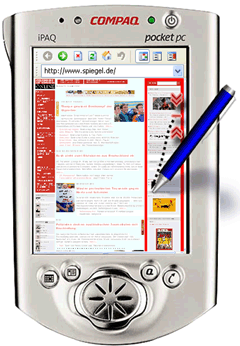collapse-to-zoom
|
up patrick baudisch |

|
The user collapses the right column using a drag gesture. When lifting the pen, the column will be replaced by a thin placeholder and the freed space will be used to render the rest of the page in a higher scale. |
Get the Flash Player to see this player.
download thisOverview visualizations for small-screen web
browsers were designed to provide users with visual context and to allow
them to rapidly zoom in on tiles of relevant content. Given that content
in the overview is reduced, however, users are often unable to tell
which tiles hold the relevant material, which can force them to adopt a
time-consuming hunt-and-peck strategy. Collapse-to-zoom
addresses this issue by offering an alternative exploration strategy. In
addition to allowing users to zoom into relevant areas, collapse-to-zoom
allows users to collapse areas deemed irrelevant, such as columns
containing menus, archive material, or advertising. Collapsing content
causes all remaining content to expand in size causing it to reveal more
detail, which increases the userís chance of identifying relevant
content. Collapse-to-zoom navigation is based on a hybrid between a
marquee selection tool and a marking menu, called marquee menu.
It offers four commands for collapsing content areas at different
granularities and to switch to a full-size reading view of what is left
of the page.
|
|
Baudisch, P., Xie, X., Wang, C., and
Ma, W.-Y. |
See more publications.
Project in collaboration with Xing Xie and Chong Wang, MSR Asia